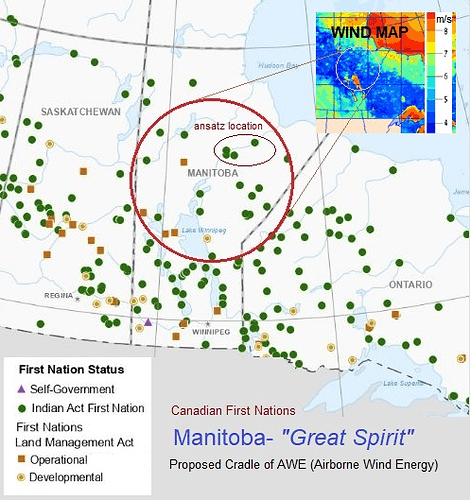Executive Summary
Airborne Wind Energy (AWE), starting from Kite Sport Power Kites, is best suited to develop organically “bottom-up” from the genius-loci of small poor remote power-needy communities, rather than “top-down” from the big rich powerful populations. Windsled for example, revolutionized scientific Polar Exploration by kite, not so much from an armchair in the NYC Explorer’s Club nor university lab in Madrid, but had to evolve and prove-out on the ice in the wind., with Kite and Wind as teacher.
Therefore, a committed leap is needed to a struggling diesel dependent community that has these key starting advantages to activate-
-
Open windswept geography
-
Diesel dependence; cost reducing RE need
-
Seasonal alignment of wind and RE need (ie. dark long-night (no solar) winter wind)
-
Creative hands-on DIY cultural tradition in recovery
-
Basic machine capabilities
-
Available 24/7 labor and youth apprentice resource
-
Consistent economic logistical travel and delivery access
-
Seed funding and technology sharing
This initially suggests a Canadian First Nation to the East and not too far North as a logical starting place, with more difficult/expensive of access Far North, Tropical Island, and Desert communities soon after. Early AWE Masters would then travel widely to transmit the techne. In time this renewed vitality would inform repowering of mega-populations.
This plan would create a foundation of practice to go-big across the UN’s World program framework, to incubate remote AWE across a kaleidoscopic variety of indigenous cultures in need of homegrown power.
UN energy-equity dissemination model-
Illich, Ivan (1974). Energy and Equity. ISBN 978-0-06-080327-8.
